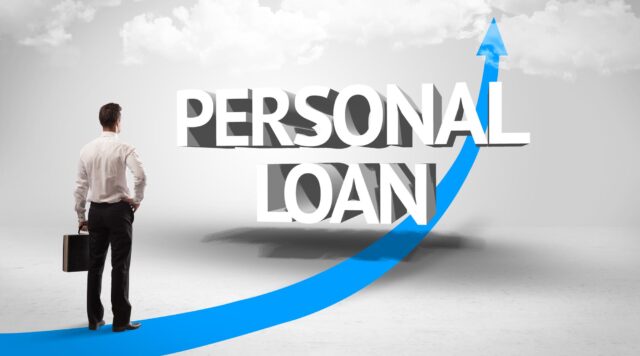It’s fascinating how things are changing at a fast pace when it comes to the financial sector as well as the technology used in it which has led to new possibilities in borrowing and lending making them easier as well as faster. Banking has been the primary source of funding for individuals and businesses however, peer-to-peer (P2P) lending and other forms of loans have gained popularity in recent times. These new capital resources have increased accessibility and provided a more open approach when dealing with both the borrower and the investor.
In this article, we will look into what P2P lending is all about, how it works , and what the future will hold with regards to it. We shall also include a few tables to highlight significant points, quotations from authorities in the field and some frequently asked questions.
Basic Principles of Peer-to-Peer Lending
What is Peer-to-Peer Lending?: Peer-to-peer lending, commonly known as P2P lending, is a financial model through which individuals or businesses can “borrow from relatives” without going through an ordinary financial institution – a bank. P2P sites serve as online markets that match borrowers with lenders, charging a fee for the service.
How Does P2P Lending Work?: Let’s investigate how P2P lending works – on P2P sites, borrowers seek loans and give out information like monthly earnings, several loans obtained in the past, the need for the loan, etc.
The P2P lending companies analyze the credit risk of the borrowers and determine the credit risk category for that customer. Those who grant funds to Lend Investors watch and select the available loans that they would like to invest in. When money is provided, the borrower pays it back in pre-arranged instalments, then the investor gets the dividends out of it.
Table 1: Key Differences Between Traditional Loans and P2P Loans
| Feature | Traditional Loans | P2P Loans |
|---|---|---|
| Intermediary | Bank or credit union | Online platform |
| Loan Approval Time | Weeks to months | Days to weeks |
| Interest Rates | Fixed, based on bank’s terms | Variable, often competitive |
| Accessibility | Limited to creditworthy borrowers | Accessible to a broader audience |
“Peer-to-peer lending has revolutionized access to credit by creating opportunities for borrowers and investors alike, bypassing the complexities of traditional banking.” — Lisa Taylor, Financial Analyst
The Growth of P2P Lending
The P2P lending market has witnessed remarkable growth since its inception in the mid-2000s. Platforms like LendingClub, Prosper, and Funding Circle have become household names, serving millions of borrowers and investors worldwide.
Factors Driving Growth:
- Technological Advancements: User-friendly digital platforms make the lending process seamless.
- Lower Barriers to Entry: Borrowers with varying credit profiles can access loans, while small-scale investors can start with minimal capital.
- Economic Shifts: The 2008 financial crisis eroded trust in traditional banks, leading consumers to explore alternatives.
Market Trends:
- The global P2P lending market was valued at $120 billion in 2020 and is projected to reach $600 billion by 2030, driven by increasing demand for digital financial solutions.
- Regions like Asia-Pacific have emerged as key players due to high adoption rates in countries like China and India.
Types of Alternative Loans
While P2P lending dominates the alternative lending space, several other types of loans cater to specific needs:
| Loan Type | Description | Best For |
|---|---|---|
| Crowdfunding Loans | Borrowers receive funds from multiple backers in exchange for rewards or equity. | Entrepreneurs, startups |
| Microloans | Small loans, often under $50,000, designed for individuals or small businesses. | Low-income borrowers, SMEs |
| Invoice Financing | Businesses sell unpaid invoices to lenders for immediate cash. | Companies with outstanding invoices |
| Merchant Cash Advances | Advances on future sales revenue. | Retail and service businesses |
| Cryptocurrency Loans | Loans backed by crypto assets. | Tech-savvy borrowers |
Benefits That Come With Alternative Loans:
Accessibility: A lot of options for borrowers with little credit history.
Flexibility: Adjustable repayment term and structure.
Speed: Approval and disbursement take less time as compared to the traditional loans.
“Alternative loans are a paradigm shift in the systems of finance as they provide access to those markets previously under-served.” — Mark Hughes, Fintech Expert
Risks and Challenges: P2P and alternative loans have seemingly countless advantages but they also have downsides. Both the borrowers and investors have to take reasonable care and consider these downsides.
For Borrowers: High Interest Rates: If a borrower is of poor credit rating, there might be chances of getting very high rates.
Harnessing the Regulatory Climate: Alternative lenders do not have to deal with the same strict regulations that control the activities of traditional banks
Default Risk: The borrowers may be unable to pay back the loans taken.
Liquidity Risks: Loan investments can’t be easily turned into cash.
Table 2: Key Risks in P2P Lending
| Risk Type | Impact on Borrowers | Impact on Investors |
|---|---|---|
| Default Risk | Damage to credit score | Loss of investment principal |
| Regulatory Risk | Limited consumer protection | Potential platform shutdowns |
| Economic Downturns | Struggle to repay loans | Reduced returns |
How to Make the Most of Alternative Loans
Tips for Borrowers
Compare Platforms: Evaluate interest rates, fees, and terms across multiple providers.
Assess Affordability: Ensure you can meet repayment obligations without strain.
Read Reviews: Learn from the experiences of other borrowers.
Tips for Investors:
- Diversify Investments: Spread funds across multiple loans to minimize risk.
- Research Borrowers: Choose loans with favorable risk ratings and credible profiles.
- Stay Updated: Monitor platform performance and regulatory changes.
The Future of P2P Lending and Alternative Loans:
Emerging Trends:
AI and Automation: Machine learning algorithms are streamlining credit assessments.
Blockchain Integration: Decentralized ledgers enhance security and transparency.
Global Expansion: P2P platforms are entering new markets, increasing accessibility.

Table 3: Predicted Trends in Alternative Lending
| Trend | Impact on Borrowers | Impact on Investors |
|---|---|---|
| AI Credit Scoring | Faster loan approvals | More accurate risk assessment |
| Blockchain Transparency | Reduced fraud risk | Improved trust in platforms |
| Global Expansion | Access to loans in underserved areas | Diverse investment opportunities |
“The future of alternative lending lies in harnessing technology to make credit more accessible and equitable for all.” — Ananya Gupta, CEO of Fintech Startup
Today we live in the world where peer-to-peer lending is becoming the law, alt-loans and alternative finance are now used more comfortably. Loans cut through brokers, reaching directly to consumers and investors.
The benefits of P2P and alternative borrowing are numerous, so are their perils. On one side, borrowers should assess the ability to pay, and investors – yearn for diversification and prudence. And while P2P is relatively young, its potential for expansion in the sphere of financial involvement is equally impressive. So, with proper education and knowledge about the market, whoever approaches it actually is given the upper hand.
FAQs
Is P2P lending safe?
P2P lending carries risks, such as borrower defaults and platform closures. However, diversifying investments and choosing reputable platforms can mitigate these risks.
Can I get a P2P loan with bad credit?
Yes, many platforms cater to borrowers with poor credit, though interest rates may be higher.
How do investors make money through P2P lending?
Investors earn interest on the loans they fund. The return depends on the loan’s interest rate and the borrower’s repayment.
Are alternative loans regulated?
Regulation varies by country and loan type. Borrowers and investors should verify a platform’s compliance with local laws.
What’s the difference between crowdfunding and P2P lending?
Crowdfunding involves raising money from multiple backers for a specific project, often in exchange for rewards or equity. P2P lending focuses on loans, with borrowers repaying investors with interest.







